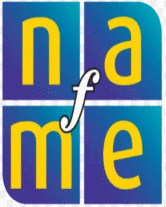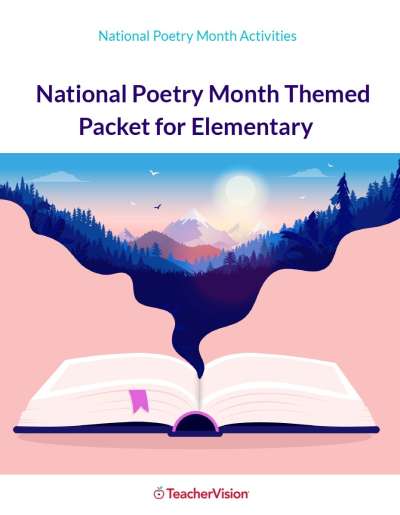One, Two, Buckle My Shoe: Music and Children's Literature
The activities in this section are effective in helping children:
- develop phonemic awareness (vocal inflections, rhymes)
- explore links between books and activities
- express the dynamics (loud/soft) and tempo (fast/slow) of the music
- gain awareness of reading
- gain exposure to chants and rhymes and a wide variety of vocal sounds
- imitate independent and collaborative play with musical materials
- improvise songs and chants to accompany play activities
- move to the beat, rhythm, and form of music
- create stories
- use their voices expressively as they chant, alone and with a group
Musical Links to Books
| Music can be found within the covers of published books. Many booksare read with a hint of rhythm and rhyme and some are meant to be sung.These books could be thought of as musical children’s literature ratherthan simply children’s literature. |
Procedures
Use the following books to introduce musical children’s literature.Knowing potential that music has to engage the attention of children andbuild variety into story reading, it seems only logical to occasionallyuse a book that sings or one with rhythm and rhyme at circle time or storyhour.
- Big Fat Hen illustrated by Keith Baker.
The familiar children’srhyme "one, two, buckle my shoe" evolves into a picture book story thatincludes the Big Fat Hen, her six friends with all their eggs and all theirchicks.
Published by Harcourt Brace, c. 1994. - There Were Ten in the Bed illustrated by Pam Adams.
Thisenduring children’s song is creatively illustrated by using a large bed anda moving wheel of international children who seem to drop off the sideof the bed at each page turn.
Published by Child’s Play, c. 1979.
Nursery Rhymes
| Nursery rhymes, as rhythmic chants, provide children opportunitiesto be vocally expressive and explore various inflections in their voices. Improvising stories and sounds about the rhymes are natural extensions. Because young children need opportunity to sing and chant alone as wellas with a group, the following ideas include a set of blocks to encouragecontinued play of the rhymes independently. Enjoy exploration of thesewonderful little music jewels. |
Procedures
- Follow the directions for vocal inflections and movement given witheach rhyme. Most educators already use vocal inflections like these; thedirections are given here to help you focus on the extreme sorts of inflectionsthat will help children explore the possibilities of speech that lead tosinging.
- Link the children’s musical explorations to a set of blocks to reinforcelessons, add an extra element of fun, and encourage individual play.
- Buildthe blocks out of 10" x 10" x 10" cardboard boxes painted with nurseryrhyme characters.
- Copy the illustrations from nursery rhyme books and glue them onto the boxes.
- Cover the finishedboxes with clear vinyl fabric if desired.
"One for the Money"
- Chant the rhyme counting on fingers. Begin very softly andgradually increase in loudness.
One for the money Very soft voice, quiet excitement Two for the show Getting louder but not loud Three to get ready Getting louder and slower, voice raising in pitch with great excitementand anticipation, holding the last syllable And four to go "Go" is the word we have been leading to. Say it with great excitementand enthusiasm. - Play a drum or bell at the end of each phrase to help childrencount sounds.
One for the money (one sound)
Two for the show (two sounds),etc. - Repeat the chant using the blocks.
- Build boxes up as eachnumber is said. On the word "go" knock them down.
- Place the blocks and drum in the free play area for individualexploration.
"Bow Wow Wow"
- Chant the rhyme several times. Use two toy dogs if available. Oneasks the question, the other gives the answer.
Bow wow wow Speak in very low, heavy voice Whose dog art thou? Continue low voice Little Tommy Tinker’s dog High, squeaky voice for contrast Bow wow wow Same high voice - Stack the blocks while repeating the chant. Children may noticethat the rhyme begins and ends with the same words.
- Place the blocks in the free play area for individual exploration.
"Jack and Jill"
- Help children explore the magic of their voices by chanting"Jack and Jill" in a number of ways. For example: whisper the rhyme,then shout it, speak it using a very low heavy voice, speak using a highlight voice.
- Say the rhyme like you think a mouse might say it, a bear,etc.
- Reinforce the different phrases in the rhyme by using a differentvoice on each phrase.
Jack and Jill went up the hill Whisper To fetch a pail of water High, squeaky voice Jack fell down and broke his crown Shout voice And Jill came tumbling after Low heavy voice - Express the meaning of the words while repeating the rhyme, causingthe voice to get higher and higher on the words "up the hill."
- When "Jackfell down" lower voice gradually while saying the words.
- Take voice backup so it can again lower when "Jill came tumbling after."
- If an instrument is available (such as xylophone, piano, bells),play up a scale as Jack and Jill go up the hill.
- Play down the scale whenthey fall down.
- Chant the rhyme while playing with the blocks.
- Build the towerwhile repeating the first two phrases.
- Knock it down on the last two phrases.
- Place the blocks in place where children can play with themduring free play time.
"Humpty Dumpty"
- Chant the rhyme with extremes in vocal inflection and expression:
Humpty Dumpty sat on the wall Strong, confident use of voice Humpty Dumpty had a great fall High voice expressing a sense of tragedy All the king's horses & all the king's men Sense of despair in voice Couldn't put Humpty together again Come to an end with low voice - Show children Humpty Dumpty blocks and stack during the firstphrase.
- Knock the blocks down while finishing the chant. At the end, add,"but Tommy can!" then ask Tommy to stack the blocks and begin again.
- Place the blocks in a place where children can play with themduring free play time.
"Little Miss Muffet"
- Chant the rhyme with great dramatic flair and vocal expressiveness:
Little Miss Muffet sat on her tuffet High voice and face - act out sitting with a beautiful dress on Eating her curds and whey Continue the mood while pretending to eat Along came a spider Lower voice, and begin
very softly,And sat down beside her Gradually getting louder with higher voice to build the anticipation And frightened Miss Muffet away Continue high voice, loud and frightened - Continue the play by improvising on the event.
- Do you thinkthe spider was a mean spider? Did he want to make friends with Miss Muffet?How did the spider feel? Where did Miss Muffet go? Did Miss Muffet comeback? Did she make friends with the spider, etc.
- Repeat the rhyme with the blocks, stacking them while chantingthe rhyme, and knocking them when Miss Muffet runs away.
- Place the blocks in the play area for individual exploration.
"Old Mother Hubbard"
- Chant the rhyme with vocal expressiveness:
Old Mother Hubbard went to her cupboard Begin with a tired sounding voice To get her poor dog a bone perhaps weary from a hard days work When she got there, High voice, lengthen words The cupboard was bare Higher voice, shocked and concerned add words - (oh no, there is no food) And so the poor dog had none High voice lowers in discouragement - Continue the dramatic and vocal play by exploring what the dogmight have said.
- What will happen to the dog? How will he get food? etc.
- Help children improvise a continuing story.
- Repeat the chant using sound effects:
Old Mother Hubbard went to her cupboard Walking footsteps with sticks on the beat To get her poor dog a bone. One sound on the drum When she got there Squeaking sound of door opening - wind chime The cupboard was bare Triangle ring And so the poor dog had none Sigh - Repeat the rhyme with the blocks, stacking them while chantingthe poem and knocking them down on the word "none."
- Place the blocks in the free play area for individual exploration.











